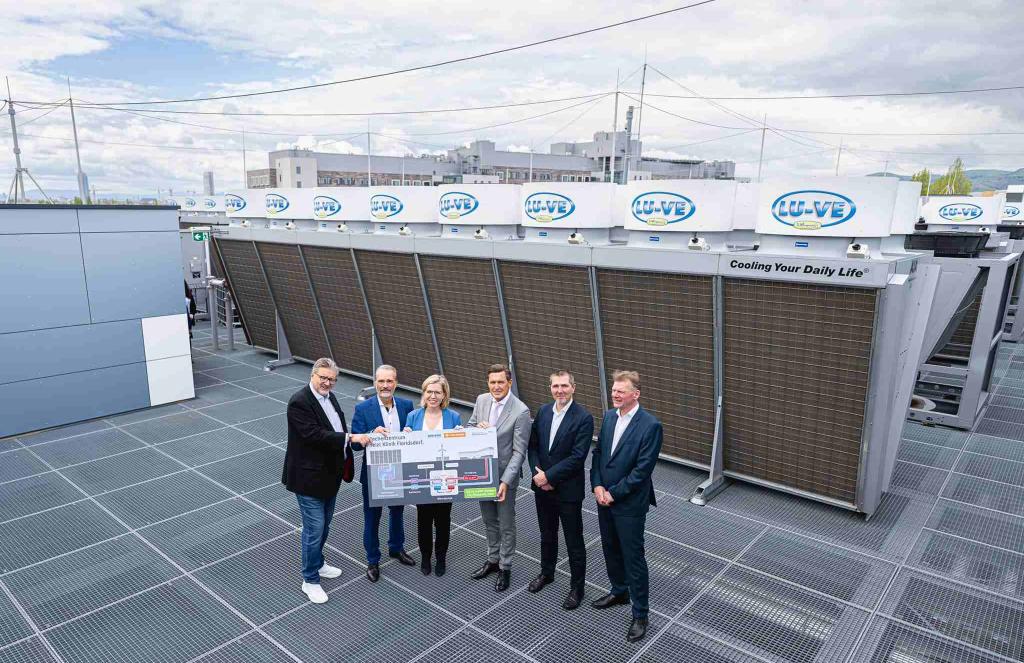Thessaloniki gets ready for its metro launch in November
The underground rapid transit lines have been under construction for almost two decades due to various project delays
 TheMayor.EU logo
TheMayor.EU logo 
Minister Leonore Gewessler, during a presentation of the project, Source: Minister Leonore Gewessler on Facebook
A look at Austria’s bid to produce all the energy that it uses
Yesterday, environmental authorities in Vienna announced they will construct a pipe connecting a data centre and the Floridsdorf Clinic. The pipe will use waste energy from the data centre to heat the hospital and it can start operating as soon as 2023. The investment is estimated to total out at around 3.5 million euros provided by Austrian federal environmental funding.
The cooperation between the two companies would enable both of them to save on thousands of tons of CO2 emissions yearly while implementing a robust circular energy principle – the data centre will heat water, which will carry the energy to the hospital, where it will disperse, returning cooler water back into the facility.
Austria’s Environment Minister, Leonore Gewessler, emphasised that the project is part of the country’s push to meet energy demand with local production. She pointed out that a good way to do that is by harvesting energy that is already being produced in the country but is subsequently wasted.
The Interxion data centre and the Floridsdorf Clinic are located just a few hundred metres away from each other, which makes a heat exchange project between the two quite feasible. The data centre has 120,000 servers on-site, which generate heat constantly and need to be cooled.
At the same time, the hospital has 90,000 metres of pipes, which bring heat to the premises, and annual hot water consumption of 73,000 cubic metres. Also, the building needs to be heated an average of 150 days per year.
This is a great example of how a circular heat exchange can work. The servers at Interxion will heat the water in the cooling system up to 82 degrees Celsius. Then the water will travel to the Floridsdorf Clinic, where that energy will heat the building in addition to fulfilling hot water needs. Then, after the water temperature drops, the liquid will go back into the data centre.
Austrian environmental authorities estimate that the project will save up to 4,000 tons of carbon emissions per year. At the same time, the data centre will be able to supply 50% to 70% of the hospital’s heat energy needs.

The underground rapid transit lines have been under construction for almost two decades due to various project delays

Now you can get your wine in Talence by paying directly in Bitcoin

That’s because the state has to spend money on updating the railway infrastructure rather than subsidizing the cost of the popular pass

Rethinking renewable energy sources for the urban landscape

The examples, compiled by Beyond Fossil Fuels, can inform and inspire communities and entrepreneurs that still feel trepidation at the prospect of energy transition

Now you can get your wine in Talence by paying directly in Bitcoin

The 10th European Conference on Sustainable Cities and Towns (ESCT) sets the stage for stronger cooperation between the EU, national and local level to fast track Europe's transition to climate neutrality.

At least, that’s the promise made by the mayor of Paris, Anne Hidalgo

The underground rapid transit lines have been under construction for almost two decades due to various project delays

At least, that’s the promise made by the mayor of Paris, Anne Hidalgo

Hostal de Pinós is located in the geographical centre of the autonomous region

Despite its church-y name, the district has long been known as the hangout spot for the artsy crowds

Urban dwellers across the EU are having a say in making their surroundings friendlier to people and the environment.

Forests in the EU can help green the European construction industry and bolster a continent-wide push for architectural improvements.

Apply by 10 November and do your part for the transformation of European public spaces

An interview with the Mayor of a Polish city that seeks to reinvent itself

An interview with the newly elected ICLEI President and Mayor of Malmö

A conversation with the Mayor of Lisbon about the spirit and dimensions of innovation present in the Portuguese capital














